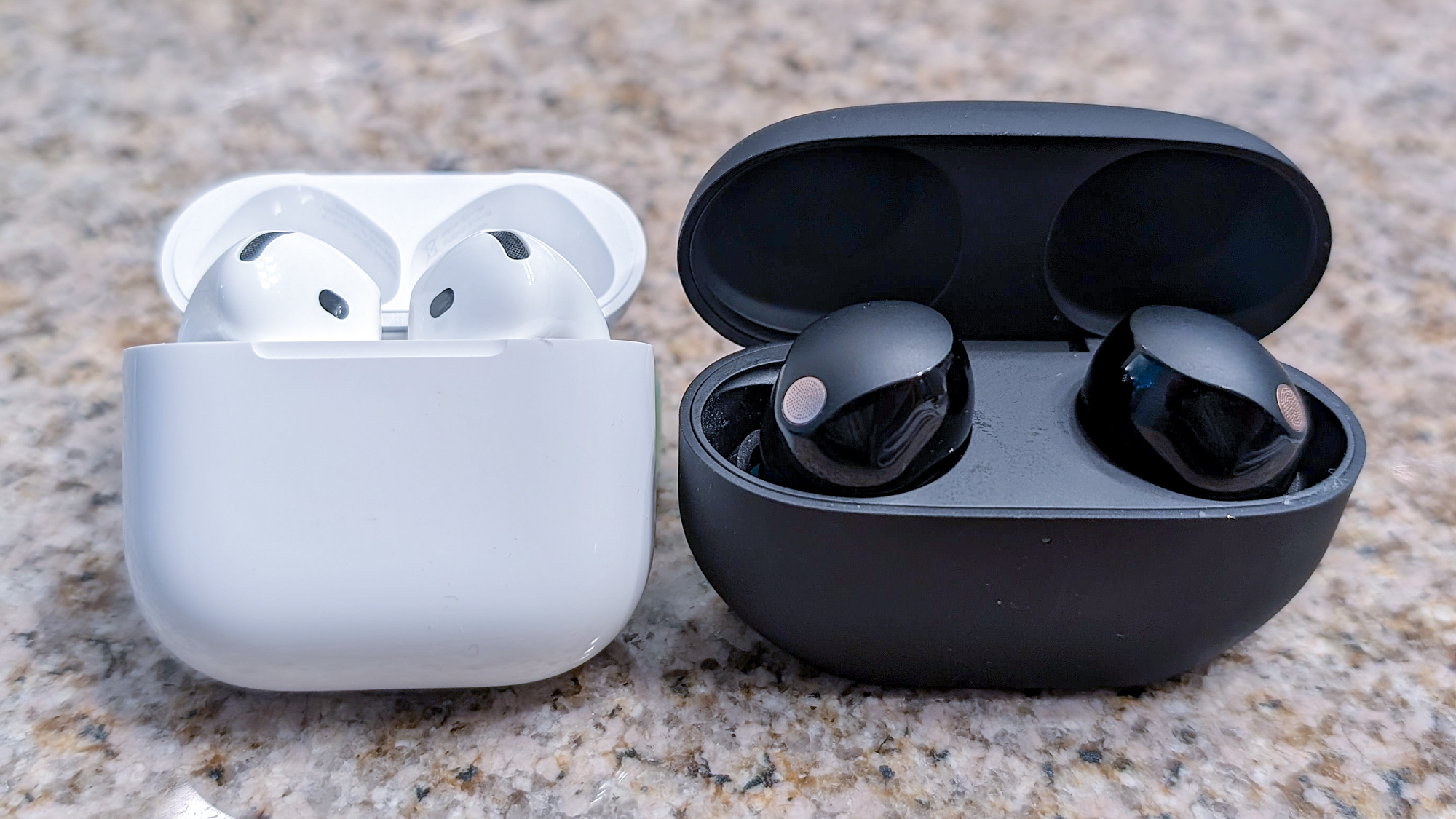
The AirPods 4 are a noteworthy release with fantastic sound and many of the same features as the AirPods Pro 2, including ANC, spatial audio, and a smart case with Find My integration.
For
- Pro-level features for less
- Effective ANC for open-ear buds
- Find My for the ANC case
- Sweat-resistant design
- Superior call quality
Against
- Average battery life
- Lackluster call quality
- Lanyard costs extra
Sony's flagship buds get you the best sound and top-tier noise cancellation for a premium.
For
- Outstanding sound quality
- Strong noise cancelation
- Exceptional functionality
- Excellent level of control
- Stable playtimes
Against
- Smaller earbud size affects eartip seal and fit
- Battery life remains the same as predecessor
- Flaky 360 Reality Audio personalization set up
The AirPods 4 (with ANC) are far better than what we imagined. Sharing the same sound design as the AirPods Pro 2 with bells and whistles (e.g., Adaptive EQ, Spatial Audio), plus the addition of active noise cancellation, they are a worthy competitor to many of the best wireless earbuds.
What better way to judge the newest AirPods than by comparing them to the current class leader: the Sony WF-1000XM5. Intelligibly powerful ANC, phenomenal sound, and tons of features in a premium, eye-grabbing design, Sony has a true wireless gem on their hands.
So, how do the AirPods 4 hold up against Sony’s Mark Series 5 buds? Scroll down to find out.
AirPods 4 vs. Sony WF-1000XM5: Specs compared
AirPods 4 vs. Sony WF-1000XM5: Price & availability
Apple released the AirPods 4 (with ANC) at $179 / £134 / AU$263, while the Sony WF-1000XM5 originally launched at $299 / £236 / AU$449. The latter come in more color options – Black, Silver, and Smoky Pink – and are often on sale (we’ve seen them for as low $223). Apple only sells the AirPods 4 in White. These two sets of buds are available at popular online retailers, as well as their respective brand website.
Performance on both sides surpasses the MSRP. Therefore, this category is a draw.
Winner: Tie
AirPods 4 vs. Sony WF-1000XM5: Design

Sony’s buds have a striking oval shape with matte finish and small wind-resistant mesh grilles that sit flush at the bottom of the touch panel. They provide a pleasant and secure fit, whether you choose the bundled memory foam or silicone tips. IPX4 certification translates to sweat and water resistance. The lighter, slimmer, and smaller charging case is just as handsome and portable friendly.
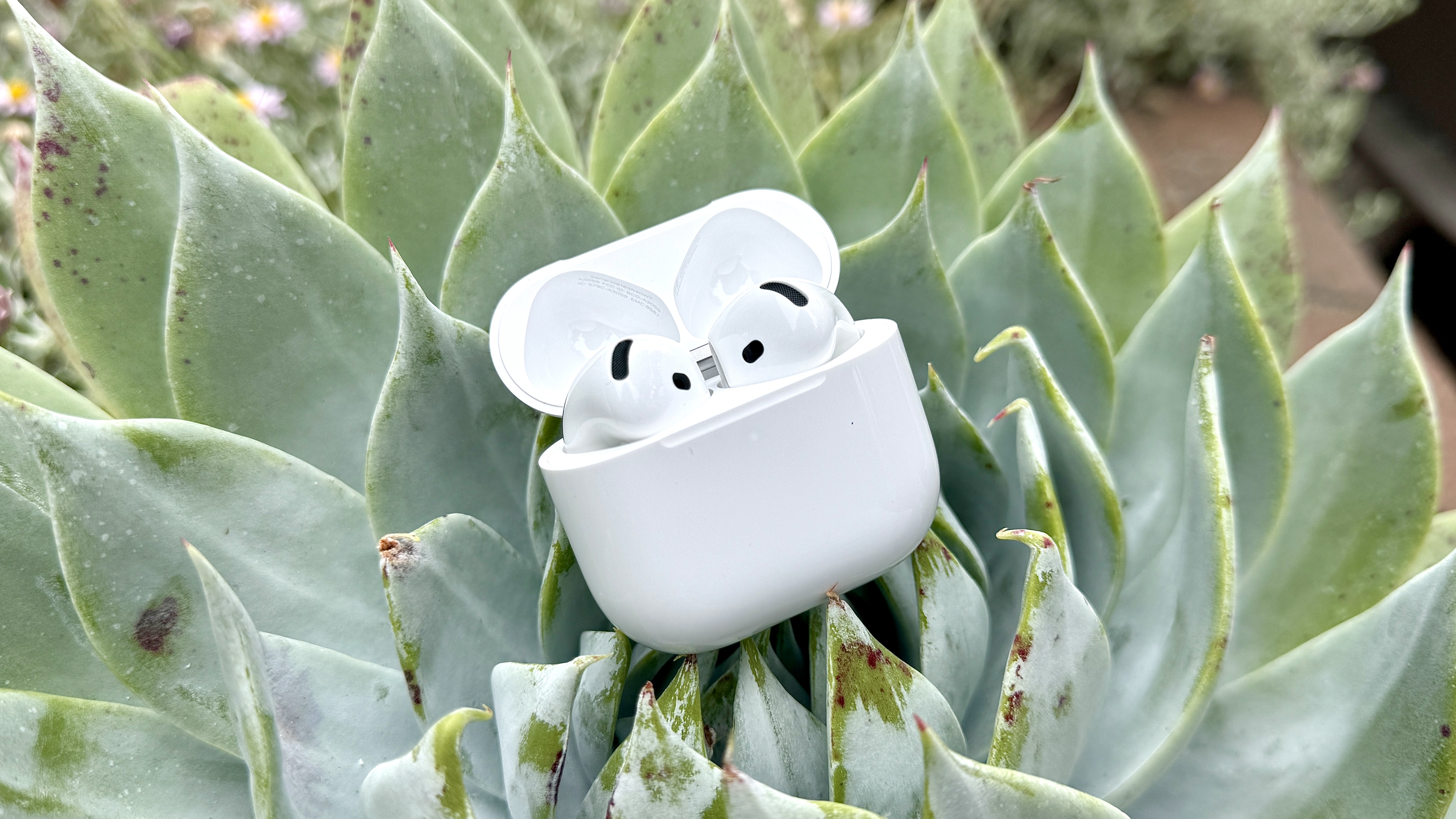
The AirPods 4 look no different than the previous version, except they come with a tinier charging case that has a built-in speaker with Find My integration. All other details remain intact, from the long-stem silhouette to the fragile plastic construction. Their open-ear design doesn’t allow for a secure fit.
Winner: Sony WF-1000XM5
AirPods 4 vs. Sony WF-1000XM5: Controls
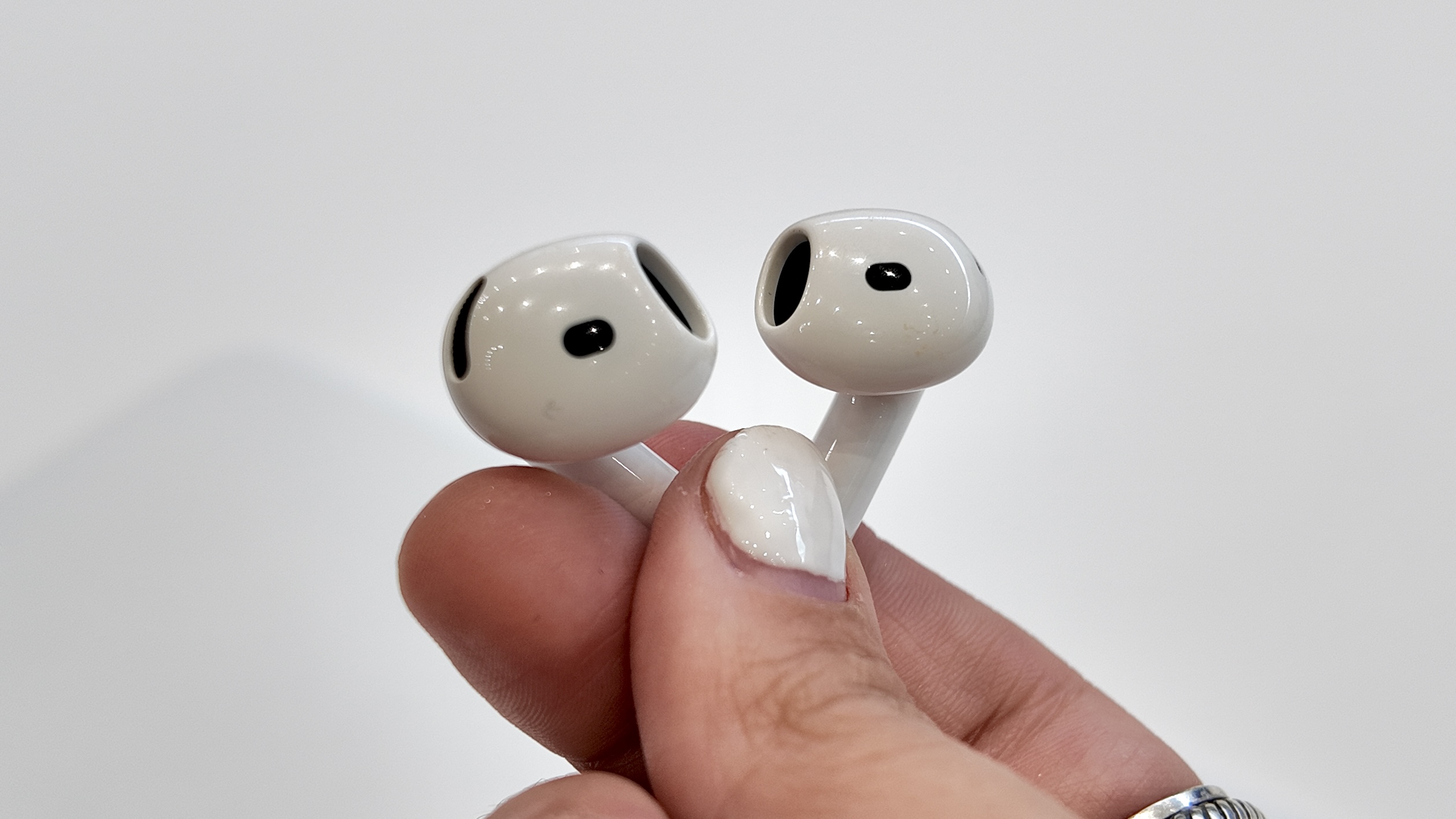
It is a blessing to experience Apple’s true wireless control scheme, which consists of immaculate voice controls, precise motion detection, and force sensors that deliver superb tactile feedback. “Hey Siri” voice activation is spot-on for voice commands on the AirPods 4. The force sensors immediately respond to single-/multi-press and long-press gestures. Wear detection is also accurate to auto-pause content when removing the buds.
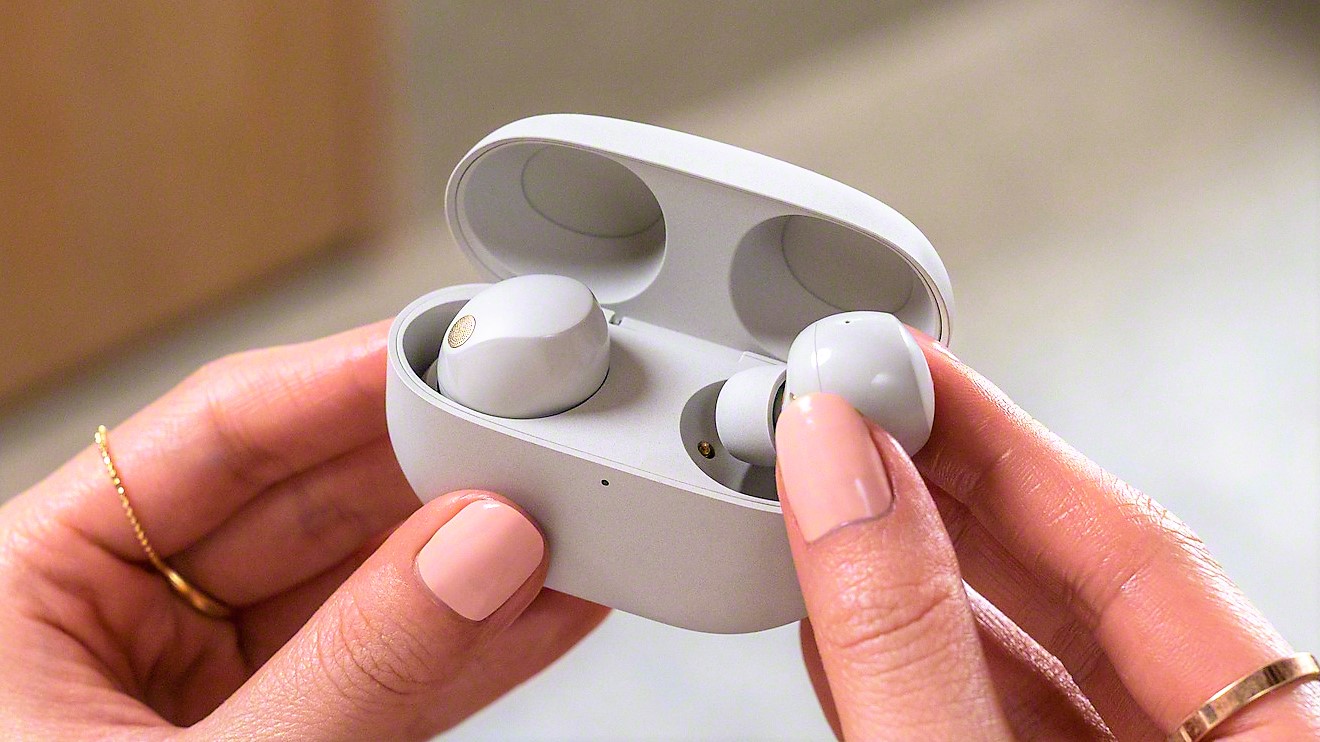
Sony did a bang-up job with the WF-1000XM5’s controls. Tap gestures and wear detection are responsive, plus hands-free Alexa and Google Assistant work well. It’s just that the AirPods 4 function flawlessly within Apple’s ecosystem.
Winner: AirPods 4
AirPods 4 vs. Sony WF-1000XM5: Sound quality
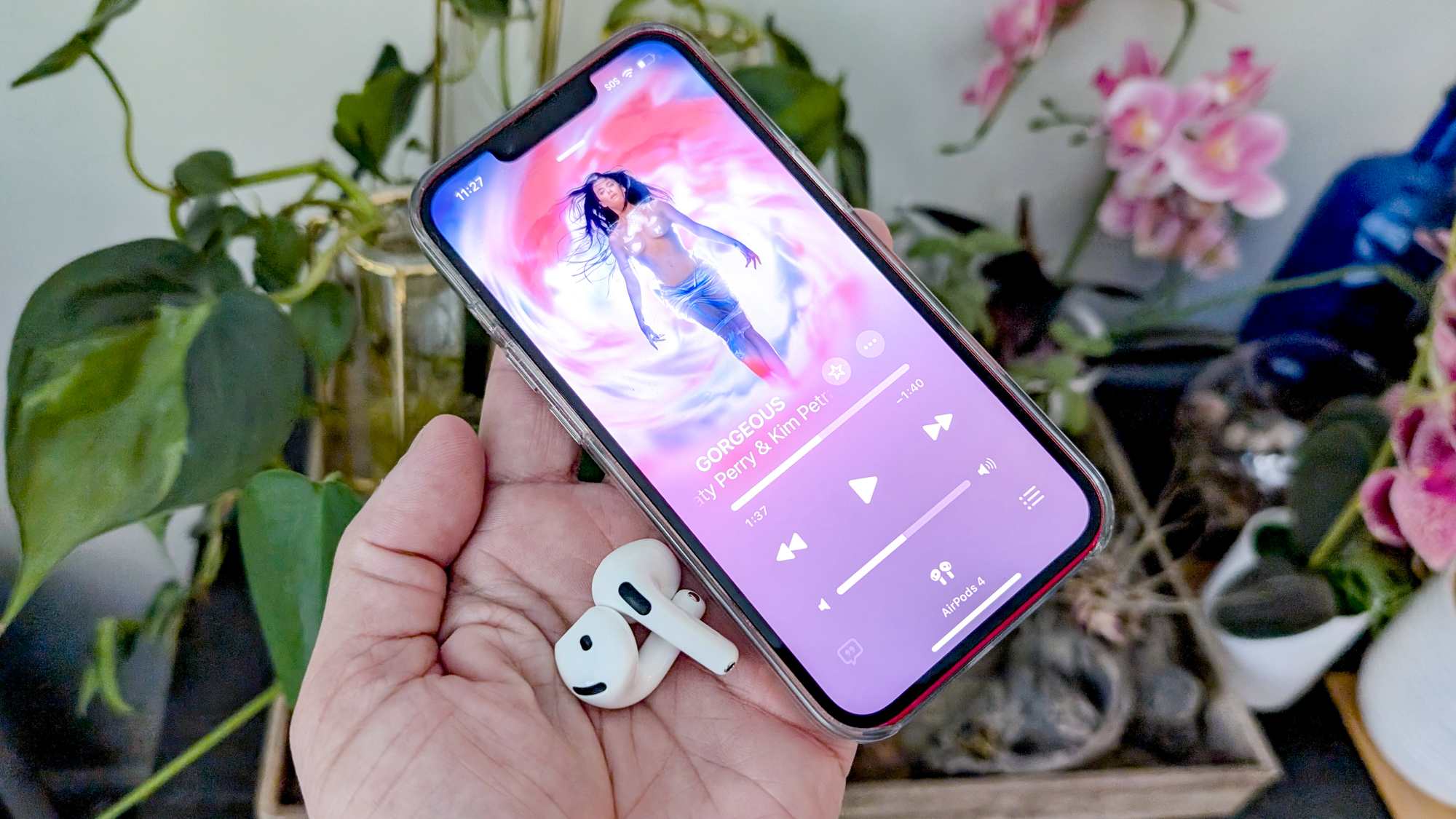
Few brands can compete with Sony’s true wireless sound. Apple isn’t one of them. That’s not to say the AirPods 4 aren’t great-sounding buds, because they are sonically impressive. The combination of a dynamic range amplifier, high-excursion driver, and Apple’s H2 chipset results in clearer frequency range and richer bass. An adaptive EQ tweaks sound to your environment. Personalized Spatial Audio creates dynamic and immersive 3D sound that no other open wireless earbuds can replicate.
Sony’s V2 processor and Dynamic Driver X give the WF-1000XM5 detailed, vibrant sound that can be enhanced and personalized through numerous proprietary features. DSEE (Digital Sound Enhancement Engine) boosts fidelity by upscaling poorly engineered recordings. There’s an EQ with a few terrific presets and a Find Your Equalizer setting to create a sound profile based on your hearing. 360 Reality Audio gives music and movies a natural-sounding presence. Bluetooth 5.3 with LDAC codec support completes the package by producing smooth Bluetooth playback at faster bitrates.
Winner: Sony WF-1000XM5
AirPods 4 vs. Sony WF-1000XM5: Active noise canceling performance
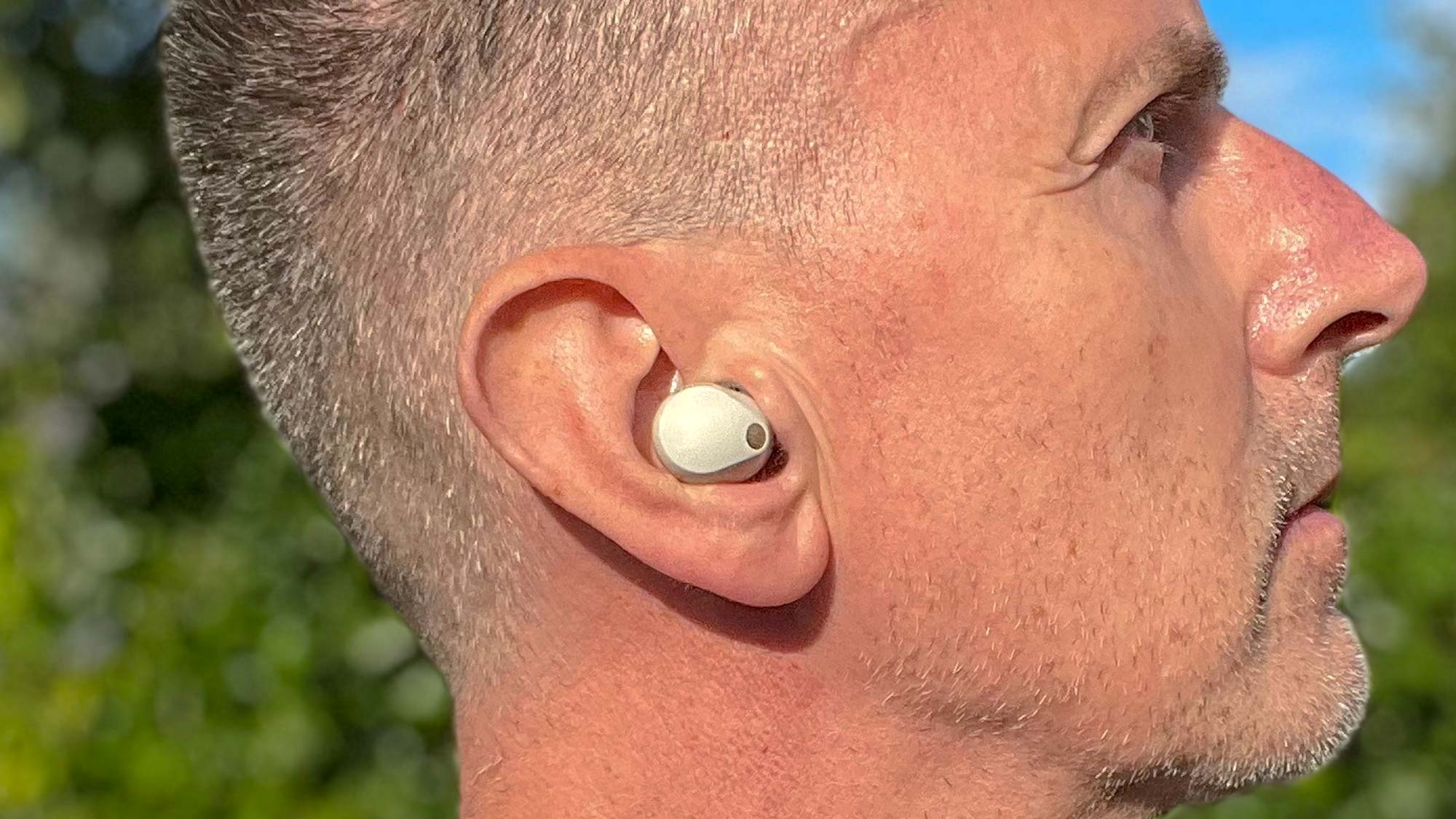
The AirPods 4 can neutralize up to 85 percent of unwanted noise, which is shockingly good because open earbuds are designed to let in ambient sound. Common household distractions like chatty family members, loud TVs, and the droning sound from a central AC unit go unnoticed. The same can be said about everyday outdoor noises like bird chirping, grocery store chatter, and passing cars. Transparency mode is useful for increasing situational awareness. Apple’s other listening features are available: Adaptive Audio, Conversation Awareness, Headphone Accommodations, Live Listen, and Personalized Volume.
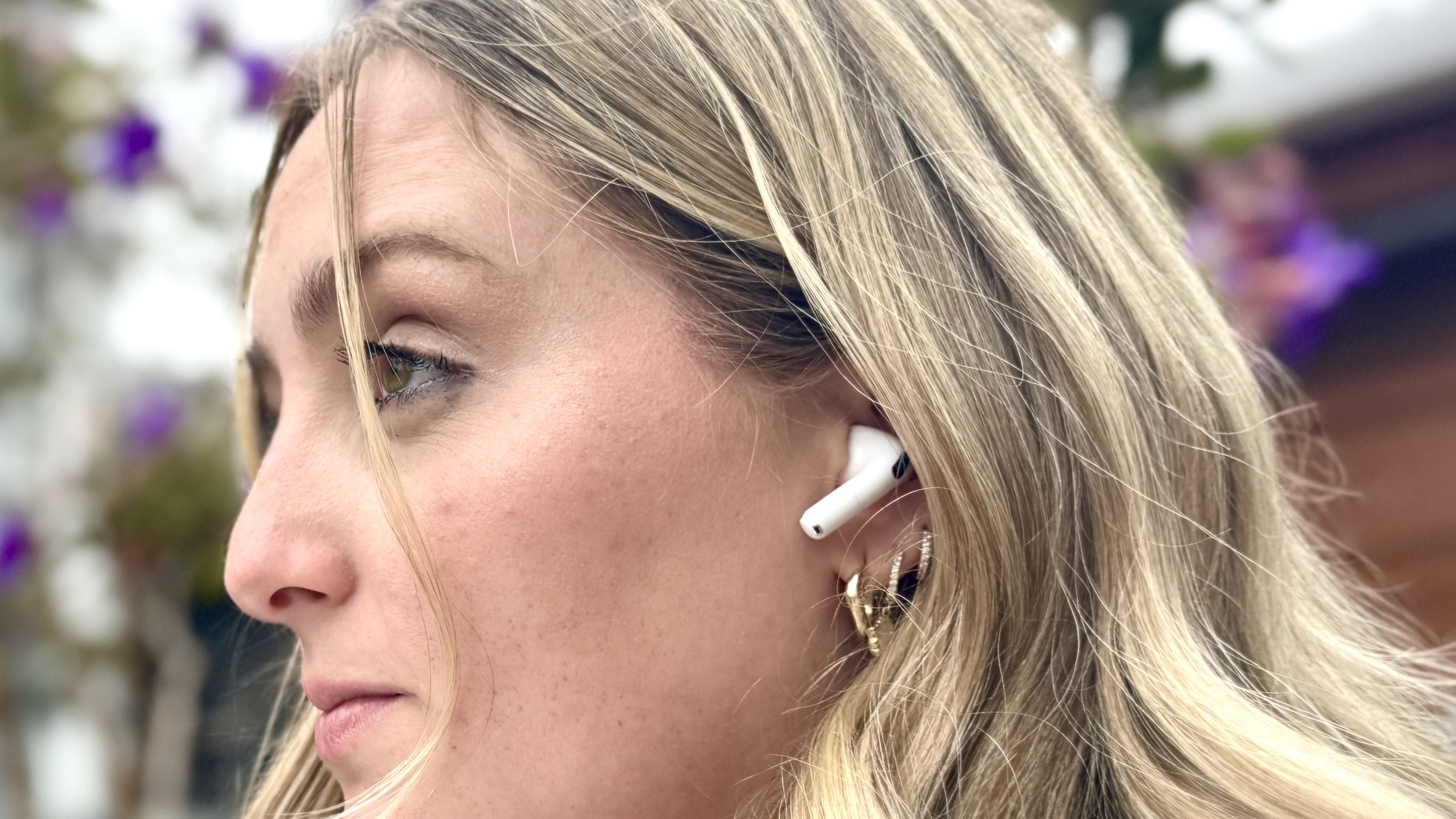
ANC is stronger and more intuitive on the WF-1000XM5. These buds eliminate up to 90 percent of noise across the frequency spectrum. High-frequency sounds are handled much better. Sony’s 20-level Ambient Sound mode picks up a high amount of external sound and demonstrates remarkable vocal capture; we could hear conversations from across the street.
Winner: Sony WF-1000XM5
AirPods 4 vs. Sony WF-1000XM5: Special features
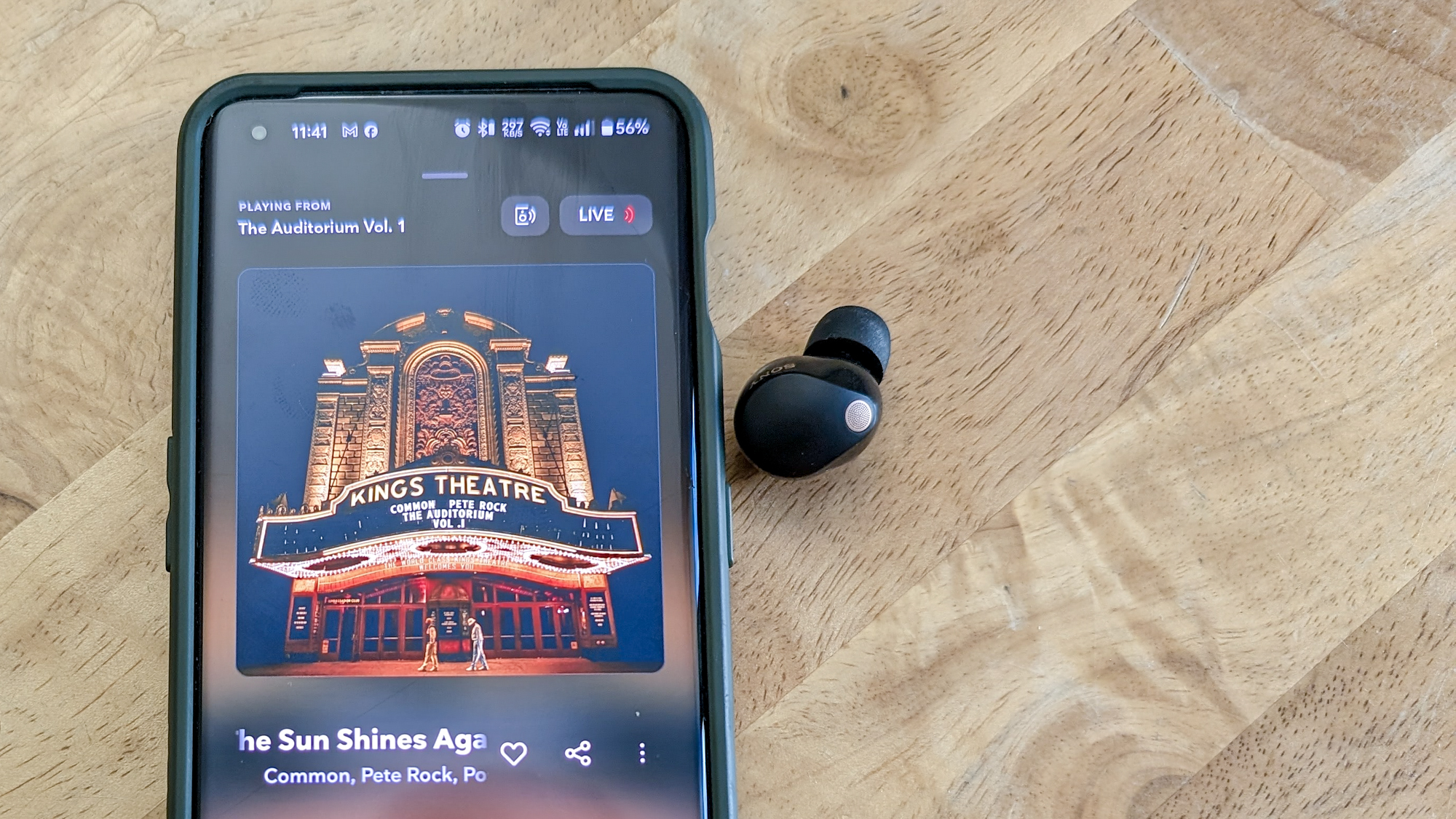
Features are equally abundant on both sets of buds. We already touched on their respective audio-enhancement and listening modes. The AirPods 4 bring back staples like automatic switching, audio sharing, Find My integration, “Hey Siri” voice activation, head gestures, and one-tap pairing with iOS devices.
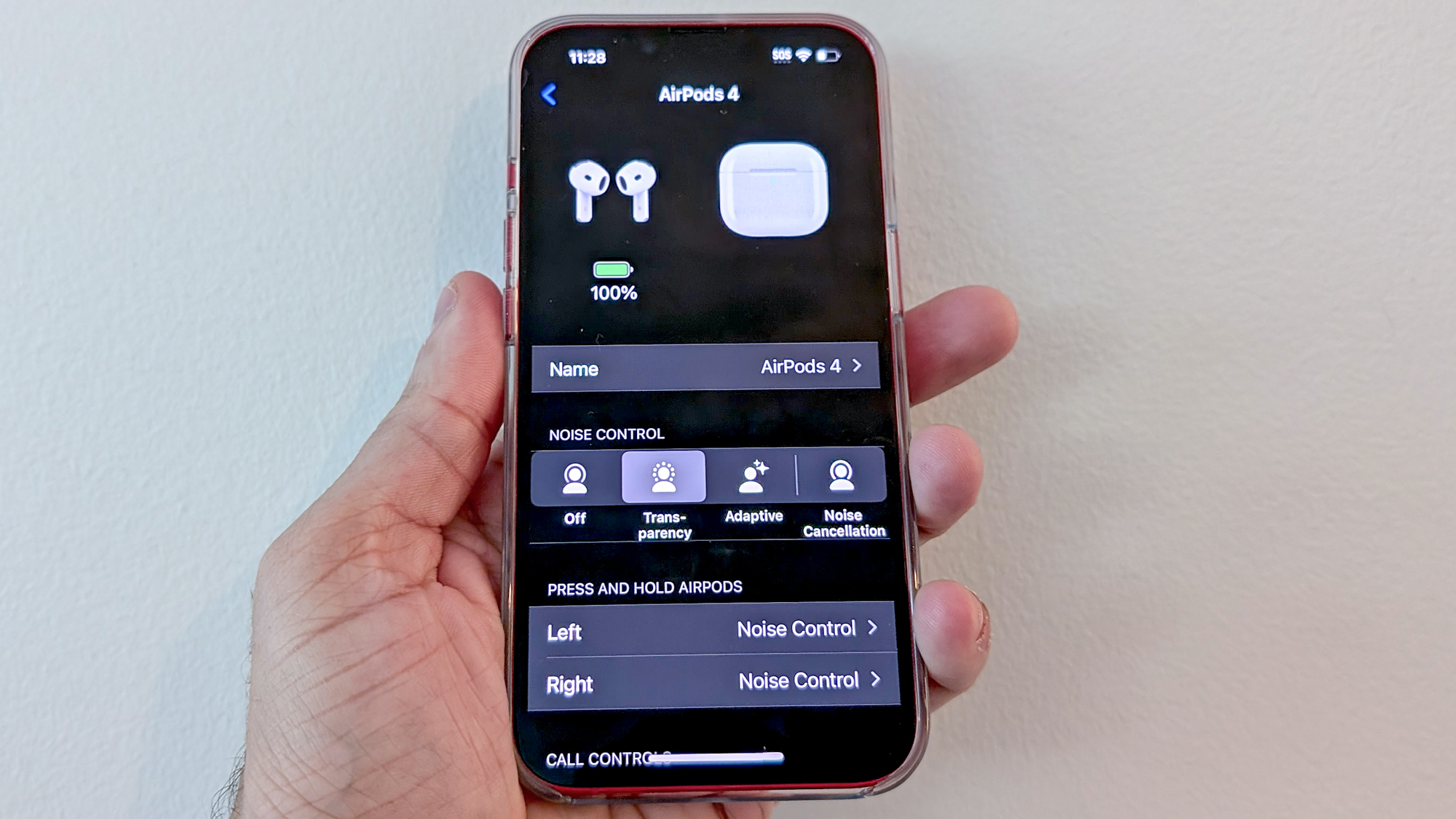
Meanwhile, the WF-1000XM5 come with hands-free Alexa or Google Assistant, Quick Attention to automatically lower volume to 10 percent, Speak-to-Chat to pause content when detecting your voice, a Spotify Tap shortcut, and multiple technology to pair the buds with two devices simultaneously.
Winner: Tie
AirPods 4 vs. Sony WF-1000XM5: Call quality

Apple always gets call quality right, no matter the AirPods model. Voice calling is mostly loud and clear on the AirPods 4. However, the buds let in more background noise than we would like. The WF-1000XM5 are more reliable for voice and video calls. Improved AI noise reduction and the mesh grilles keep background noise and wind to a minimum. Sony’s feed-forward mics deliver clear vocal output.
Winner: Sony WF-1000XM5
AirPods 4 vs. Sony WF-1000XM5: Battery life

It’s mindboggling to see that the AirPods 4 have lower battery life than the AirPods 3. A max of 5 hours playtime (4 hours with ANC on) is very disappointing, even for current-gen AirPods. The WF-1000XM5 generate up to 12 hours of listening time, depending how you use the buds. Sony’s wireless charging case holds up to 36 hours, which is 6 hours more than Apple’s wireless charging case. Quick charging is faster on the WF-1000XM5: a 3-minute charge equates to 1 hour of playtime. As with all AirPods models, the AirPods 4 net you 1 hour of use on a 5-minute charge.
Winner: Sony WF-1000XM5
AirPods 4 vs. Sony WF-1000XM5: Verdict
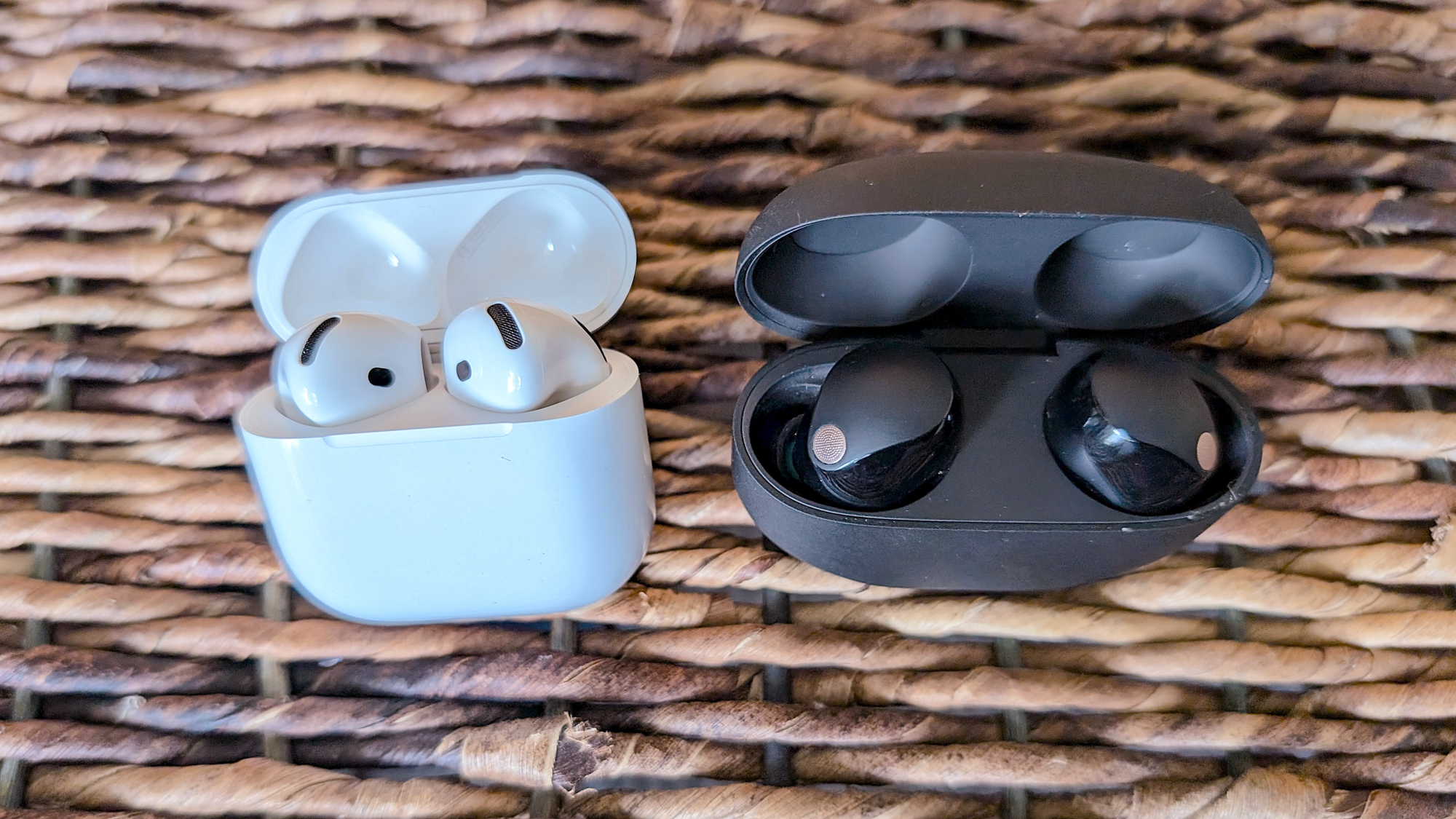
Sony’s WF-1000M5 wireless earbuds easily win this battle. Having the brand’s top sound technologies and noise cancellation in a sharp-looking design is well worth the steep MSRP. Strong battery life, call quality, and connectivity are hallmarks that every business user will appreciate. Any complaint about these buds seems trivial when factoring in their overall performance.
Apple smartly upgraded the AirPods 4’s design and sound with many of the same traits as the AirPods Pro 2. ANC performs well to let listeners enjoy music and movies peacefully. Spatial Audio effectively livens the soundscape. Apple’s control scheme is also untouchable. However, there’s no getting over the decreased battery life and unstable fit.







